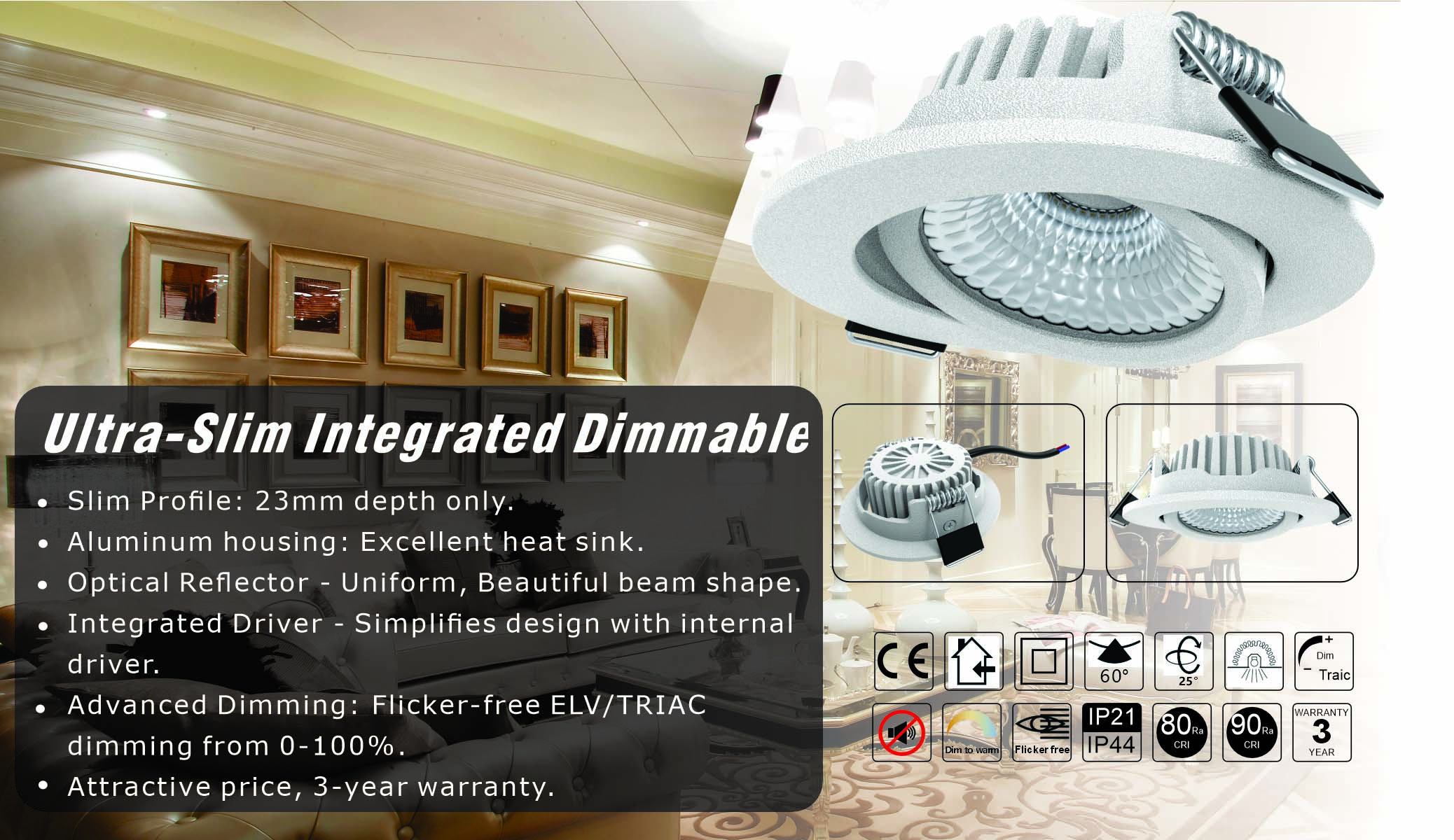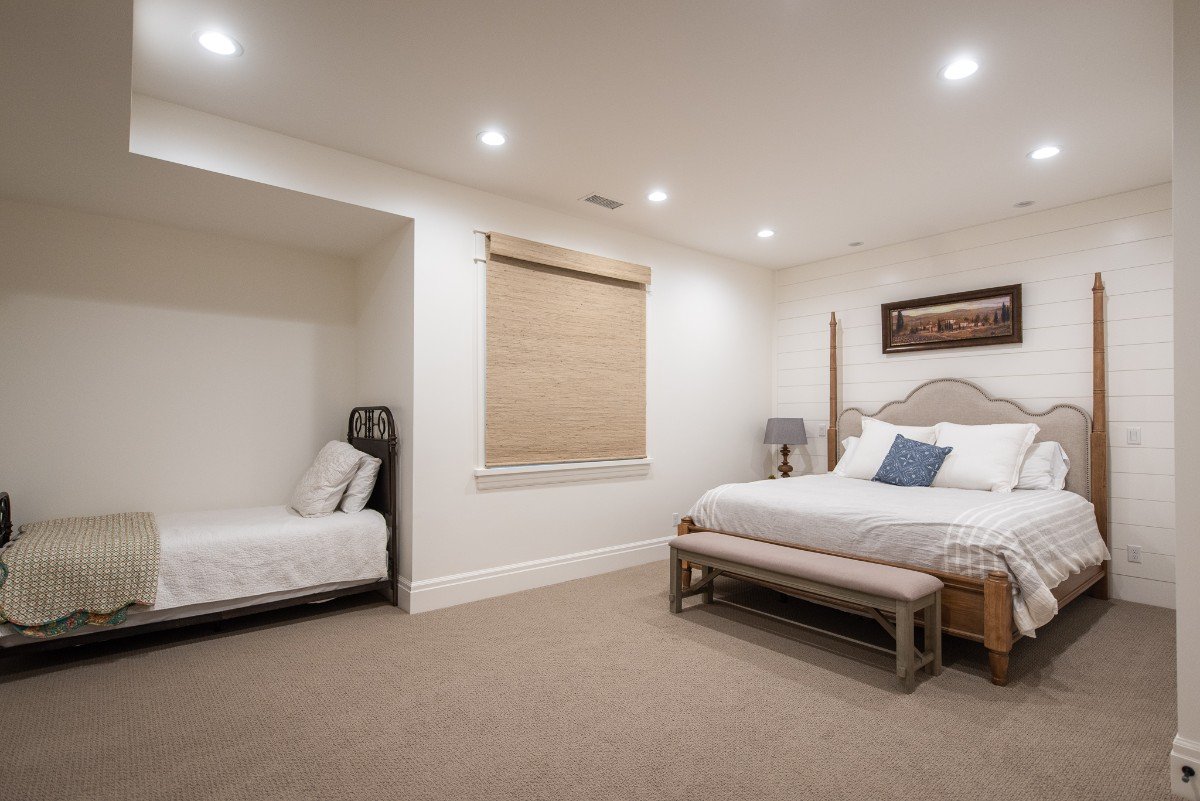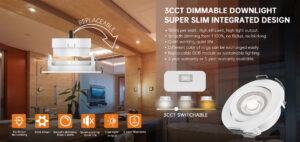Dimmable downlights have transformed modern lighting by offering adaptable, energy-efficient illumination that suits a variety of environments. In 2025, their importance continues to grow as consumers and professionals seek lighting solutions that combine flexibility, quality, and sustainability.
This article delves deeply into the essential factors that determine the performance and suitability of dimmable downlights, including their technology, compatibility, light quality, and practical applications.
It also highlights the innovative contributions of Radians Lighting, a leading European manufacturer known for customization and quality control.
Introduction to Dimmable Downlights
Dimmable downlights are recessed lighting units designed to allow users to adjust brightness levels seamlessly. Unlike fixed-output lights, these downlights provide versatile lighting environments, from bright task lighting to soft ambient illumination. This flexibility makes them ideal for diverse settings, including homes, offices, retail spaces, and hospitality venues.
Beyond aesthetics, dimmable downlights enhance energy efficiency by reducing power consumption during lower brightness settings. They also extend the lifespan of LED components by minimizing electrical stress. However, achieving optimal dimming performance requires attention to dimmer compatibility, light quality, and installation conditions.
Key Factors for Choosing Dimmable Downlights
Compatibility with Dimmers
A critical consideration is ensuring that dimmable downlights are compatible with the dimmer switches used. LED downlights often require LED-specific dimmers that handle low wattage and particular electrical characteristics. Using incompatible dimmers can cause flickering, buzzing, or limited dimming ranges.
Manufacturers like Radians Lighting provide comprehensive compatibility lists, helping users select dimmers that guarantee smooth, flicker-free dimming. This compatibility is vital for both residential and commercial installations to ensure reliability and user satisfaction.
Dimming Technology and Methods
Dimmable downlights use various dimming technologies:
- Trailing edge (ELV) dimming: Preferred for LEDs due to smooth operation and low noise.
- Leading edge (TRIAC) dimming: More common with traditional bulbs but less ideal for LEDs.
- 0-10V dimming: Popular in commercial and smart lighting for precise control.
- DALI (Digital Addressable Lighting Interface): Enables advanced control in large-scale installations.
Choosing the appropriate dimming method depends on the application and existing electrical infrastructure, with trailing edge dimmers generally recommended for residential LED downlights.
Light Quality and Color Rendering
High-quality dimmable downlights maintain consistent color temperature and Color Rendering Index (CRI) throughout the dimming range. A CRI above 80 (ideally 90+) ensures colors appear natural and vibrant. Warm white (2700K-3000K) is preferred in living spaces for a cozy atmosphere, while neutral or cool white (3500K-4000K) suits work areas.
Advanced models feature dim-to-warm technology, which mimics the warm glow of incandescent bulbs when dimmed, enhancing mood and ambiance.
Energy Efficiency and Lifespan
LED downlights consume up to 85% less energy than incandescent bulbs and typically last between 25,000 and 50,000 hours. Dimming further reduces energy use and prolongs LED lifespan. Compliance with European regulations like the EU Ecodesign Directive ensures that dimmable downlights meet strict energy efficiency standards, supporting sustainability goals.
Installation and Design Considerations
Proper installation is essential for performance and safety. Key factors include:
- Cut-out size and ceiling type compatibility: Downlights come in sizes such as 60mm, 75mm, and 90mm to fit various ceilings.
- Heat dissipation: Prevents premature LED failure.
- IP rating: Important for moisture-prone areas; IP44 or higher is recommended for bathrooms.
- Beam angle: Determines light spread; narrow beams highlight features, wide beams provide general lighting.
Smart Lighting Integration
Smart dimmable downlights compatible with platforms like Amazon Alexa, Google Assistant, and Apple HomeKit offer remote control, scheduling, and scene setting. These features enhance convenience, energy management, and support human-centric lighting that adapts to occupants’ needs.
Applications of Dimmable Downlights
Dimmable downlights are versatile and find applications across residential, commercial, and hospitality settings. Their ability to adjust brightness and color temperature makes them suitable for creating tailored lighting environments.Residential Applications
In homes, dimmable downlights improve comfort and functionality across various rooms:- Living Rooms: Adjustable lighting allows users to create bright settings for activities like reading or entertaining and dimmed moods for relaxation or watching movies. Accent lighting can highlight artwork or architectural features.
- Bedrooms: Dimmable downlights provide soft, warm lighting for winding down, while brighter light supports tasks such as dressing or reading. Installing downlights near mirrors or wardrobes enhances usability on darker mornings.
- Kitchens: Bright task lighting is essential for cooking, but dimmable downlights allow for softer lighting during meals or social gatherings. Under-cabinet dimmable downlights improve countertop visibility and ambiance.
- Bathrooms: Moisture-resistant dimmable downlights with adequate IP ratings provide functional lighting for grooming and relaxing, with dimming adding a spa-like atmosphere.
Commercial and Office Spaces
In offices and retail environments, dimmable downlights contribute to productivity and customer experience:- Offices: Adjustable lighting supports different work modes, from focused tasks requiring bright light to meetings or breaks benefiting from softer illumination. This flexibility can reduce eye strain and boost wellbeing.
- Retail Stores: Dimmable downlights help highlight products and create inviting atmospheres. Lighting levels can be adapted based on time of day or promotional events.
- Restaurants and Cafés: Lighting sets the mood, with brighter lighting during busy hours and dimmed settings for intimate dining experiences. Adjustable downlights enhance ambiance and customer comfort.
Hospitality and Cultural Venues
Dimmable downlights are essential in hotels, theaters, galleries, and museums:- Hotels: Provide guests with control over room lighting to enhance comfort. Dimmable downlights in lobbies and corridors create welcoming and adaptable environments.
- Theaters and Galleries: Precise brightness control highlights exhibits or stage areas without glare, enhancing visual impact and visitor experience.
- Event Spaces: Adjustable lighting supports diverse functions, from conferences to social events, allowing for tailored atmospheres.
Radians Lighting: Excellence in Dimmable Downlight Solutions
Radians Lighting is a leading European manufacturer specializing in high-quality dimmable downlights tailored to the needs of diverse markets including Germany, the Netherlands, France, Sweden, Denmark, Norway, and the United Kingdom. Their commitment to innovation, customization, and rigorous quality control positions them as a trusted partner for lighting projects.Product Customization and Design
Radians offers bespoke lighting solutions, enabling clients to specify dimensions, color temperatures, beam angles, and dimming technologies. Their design team collaborates with architects and lighting professionals to ensure seamless integration with project requirements.Production Quality Control
Radians enforces strict quality assurance protocols, including testing for dimming performance, energy efficiency, and durability. Their products comply with European standards such as CE and RoHS, ensuring safety and environmental responsibility.Product Categories Related to Dimmable Downlights
These products combine advanced dimming technology with superior light quality and energy efficiency.Comparison of Popular Dimmable Downlight Types
| Feature | Recessed Dimmable Downlights | Surface Mounted Dimmable Downlights | Smart Dimmable Downlights |
|---|---|---|---|
| Installation | Requires ceiling cut-out | Mounted on ceiling surface | Wireless, hub-connected |
| Aesthetic | Minimalistic, flush finish | Visible fixture, versatile designs | Customizable color & control |
| Dimming Technology | Trailing edge, 0-10V | Leading/trailing edge | Wireless dimming options |
| Energy Efficiency | High | Moderate to high | High with automation |
| Use Case | Homes, offices, retail | Retrofits, low ceilings | Smart homes, offices |
| Price Range (EUR) | 20 – 60 | 25 – 70 | 40 – 100+ |
Conclusion
Dimmable downlights represent a critical advancement in lighting technology, offering adaptable, energy-efficient illumination suited for a wide range of environments. Key considerations such as dimmer compatibility, dimming technology, light quality, and installation requirements ensure optimal performance and user satisfaction. The growing integration of smart controls further enhances their appeal by providing convenience and energy management.
Applications in residential, commercial, and hospitality sectors demonstrate the versatility and value of dimmable downlights. Companies like Radians Lighting exemplify industry leadership through product customization, stringent quality control, and compliance with European standards.
By carefully selecting dimmable downlights that meet these criteria, users can create lighting environments that are not only functional and energy-saving but also aesthetically pleasing and adaptable to evolving needs.
For more information and to explore Radians Lighting’s extensive product range, visit their official website at Radians Lighting.







